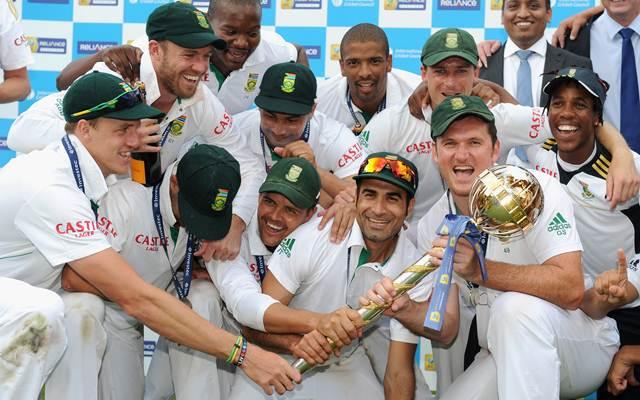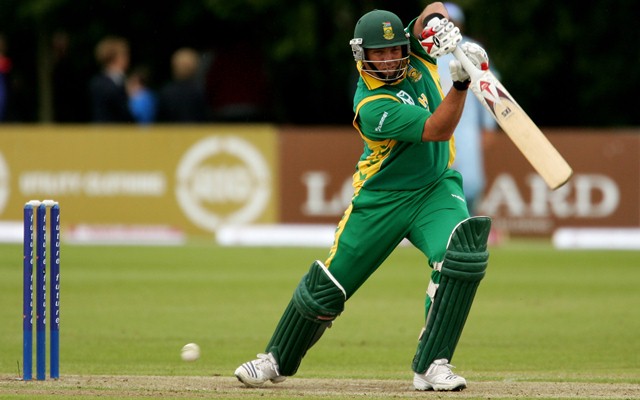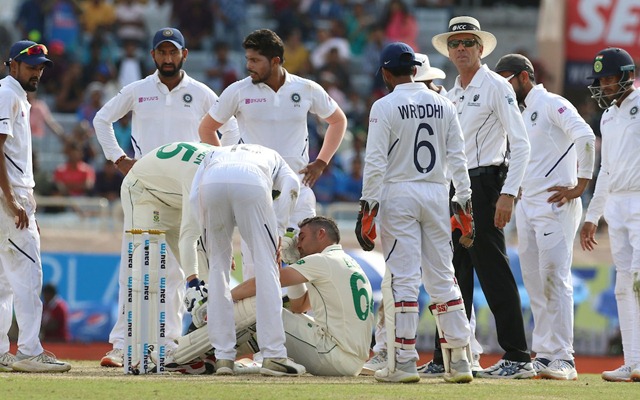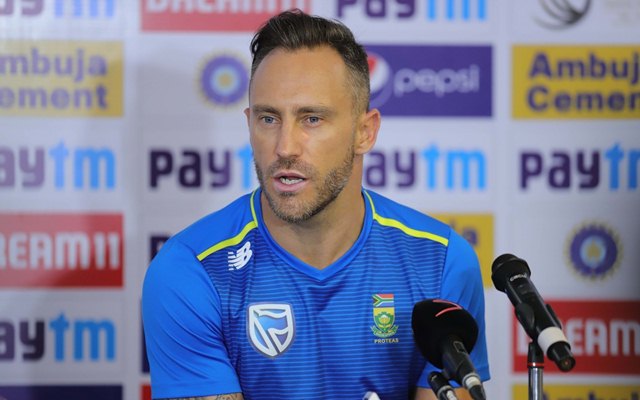South Africa may have lost some of their big stars, but their decline is worrying and sad for the game
A side known to be fighters and who had the best record for a team playing overseas looked like minnows when they played against India recently.
View : 1.8K
6 Min Read


The current state of cricket in South Africa is a very worrying and disturbing sign for world cricket. A team that has always been extremely competitive and aggressive in the past seems subdued and meek in the past few years. Their poor, almost shocking display against England recently where they lost the Test series 1-3 is proof enough of where their cricket is headed.
This has got to with the exodus of so many gifted and talented players who decided to opt for the Kolpak deal over playing for their country. That stripped South Africa of some world-beaters leaving the current lot in bad shape. And the retirement of someone like AB De Villiers has not yet sunk in for the Proteas. Now there is way too much for Faf du Plessis and Quinton De Kock to do, leaving the team in a bad shape most of the times.
It won’t be fair to say that just because SA lost so many fine players, they are struggling this badly across formats. It’s their inability to provide the much-needed financial stability that has seen a long list of players lost to the Kolpak deal like Morne Morkel, Kyle Abbott, Simon Harmer, Vernon Philander, Rilee Russow to name a few.
Also, the quality of players in their domestic circuit needs to be questioned. Why aren’t the players coming in not upto international standards barring few players like Andrich Nortje, Russie Van Dussen and Temba Bavuma.
South Africa- A side known to be equipped with fighters

A side known to be fighters and who had the best record for a team playing overseas looked like minnows when they played against India recently. They looked completely inadequate and hapless and were found wanting. This is not the South Africa people in the 1990s and 2000s grew up watching, this was the team that breached the Perth fortress in 2008.
At Ranchi, in the third Test, lots of overs had been lost because of rain. Still, South Africa conceded an innings defeat very early into the fourth morning. In the second Test at Pune also, they had suffered an innings defeat and Faf du Plessis was hurting.
The South Africa captain is a fantastic player in his own right. He played in winning teams, alongside the likes of Jacques Kallis, AB de Villiers, Dale Steyn and Hashim Amla. But at Ranchi, after his team was hammered 3-0 by a ruthless Indian side, du Plessis looked to be searching for answers, which doesn’t seem to be coming anytime soon.
Only in the first Test at Vizag, did the visitors show some fight and managed to take the game to the final day. A young South African side looked mentally and technically inept to counter India’s quality and aggression. The Proteas have now lost three of their last four-Test series.
The Proteas suffered a thumping 0-3 defeat against India in Tests

Their skipper Du Plessis admitted that they were outclassed. He spoke about the Indian fast bowlers’ pace and consistency, and the ruthlessness of India’s batting, which according to the skipper made them mentally weak.
“It takes a lot of energy and it takes a lot of toll and that’s why you could see towards the end our batting line-up was mentally weak. You don’t want to be mentally weak. Obviously, you try as hard as you can. But the ruthlessness of them (India) right through this series… you just feel like there’s no opportunity or moment in the game when you can hide, you know. It’s like constantly your body is tired, your mind is tired and then you make mistakes,” du Plessis had said post the 0-3 series defeat to India.
South Africa’s decline is alarming. Of course, this is a young team, which is going through a transition. They have lost their big guns – AB De Villiers, Steyn, Amla, Imran Tahir and Morne Morkel. You can’t buy their class and experience in the market. Young players need time to grow.
The Saffers have an exciting batting talent in Zubayr Hamza and a world-class fast bowler in Kagiso Rabada. Their team management erred in not picking Hamza for the first two Tests – he had an excellent ‘A’ tour for South Africa in India last year and also impressed during his half-century in the first innings at Ranchi.
Handling transition is not easy. After the 2011 World Cup, when India had been going through that phase, suffering whitewashes became the norm – in England and Australia. India had even lost a home series to England during that period. India, however, had a vast talent pool to choose from for a quick rebuild.
South Africa don’t have that advantage. Australia went through a similar phase between 2012-2014 when under Michael Clarke‘s captaincy without many of their greats who had retired, they looked very weak and lost many matches across formats.
Four years ago, Cricket South Africa (CSA) submitted a document to the national government, outlining its roadmap to implement transformation policies that would create opportunities for “previously disadvantaged” people. Under the policy, a quota system was introduced at all levels of cricket.
At first-class level, picking six non-white players – at least two black Africans – became mandatory. For the national team, the quota number became the same, although it was decided that instead of every match, an average would be taken every year.
Faf du Plessis highlights how Koplak has hurt South African cricket

In the grand scheme of things, it was the right decision. To make cricket popular in South Africa, the sport had to get rid of its white exclusivity. But the policy also threw up a ‘merit versus opportunity’ debate. Those who were left out decided to move on. Many of them took the Kolpak route and switched to playing county cricket in England at the expense of international cricket.
South African players are eligible for the Kolpak deals via the Cotonou Agreement with the European Union (EU), and since 2004, the Proteas have lost dozens of cricketers to Kolpak, including stars like Morne Morkel and Kyle Abbott, and also exciting young talents like Simon Harmer.
Faf described how Kolpak has hurt South African cricket. “We are also losing our experience in domestic cricket. Your top players domestically are going overseas. Your guys that get left out of the South African team; they go overseas. So you are missing out on all your best players and your talent pool is all of a sudden a lot smaller. And even like I said, the guys going there post international cricket, guys like Hashim Amla, those guys, they won’t be playing domestic cricket back home. So you lose all of that experience.”
Money, too, is a big reason for the Kolpak exodus, as the South Africa skipper pointed out, “Pound is stronger than Rand”. Du Plessis hoped that a no-deal Brexit would close the Kolpak route because in that case, the UK will no longer be a part of the EU.
All valid reasons aside, the CSA needs to revamp its domestic structure. The country’s domestic cricket has become weak. Also, schools, the breeding ground of the future stars in South African cricket, somehow are not unearthing quality young talent at a steady pace. It’s time for a reboot.
With the Brexit situation, there was talk that 20 players who took the Kolpak route could be allowed to play for their country again for 1-2 years. That seems to be the only way to counter this massive slide in quality. South Africa still are very much a loved and respected side but one cannot completely ignore their current state in world cricket. At this rate, a first-round exit from the ICC World T20 is very much on the cards.
Watch: Irfan Pathan’s interview post his retirement
Download Our App